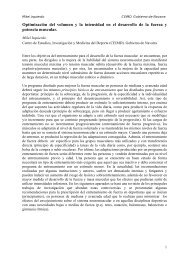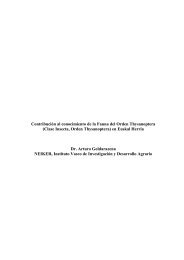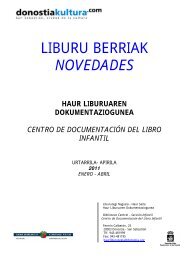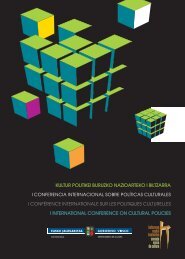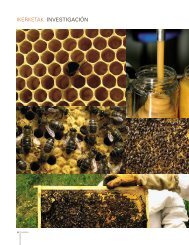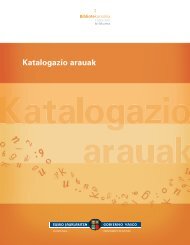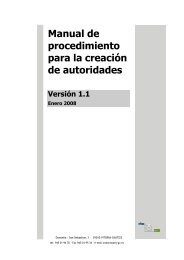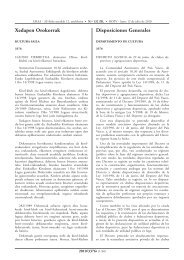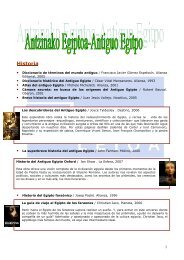The Basque Country (pdf, 4,3Mb) - Kultura Saila - Euskadi.net
The Basque Country (pdf, 4,3Mb) - Kultura Saila - Euskadi.net
The Basque Country (pdf, 4,3Mb) - Kultura Saila - Euskadi.net
You also want an ePaper? Increase the reach of your titles
YUMPU automatically turns print PDFs into web optimized ePapers that Google loves.
2.3. <strong>The</strong> rise of liberal capitalism:<br />
early industrialisation<br />
11<br />
<strong>The</strong> sixteenth through the ni<strong>net</strong>eenth centuries saw a change from<br />
the typical feudal society of the Middle Ages to another type of<br />
society based on capitalism. <strong>The</strong> emergence of new powers in the<br />
seventeenth century brought about political and social conflict,<br />
including numerous popular uprisings known as matxinadas.<br />
2.3.1. Political aspects<br />
In the decades following the triumph of the Bourbons in the War<br />
of Spanish Secession, many of the tax and free trade advantages<br />
enjoyed by the <strong>Basque</strong> economy were removed.<br />
At the end of the eighteenth century efforts were already being<br />
made to move the customs houses from the inland locations<br />
(the mountains bordering Castile) to the coast and the Pyrenees,<br />
meaning that foreign merchandise would no longer be able to<br />
enter freely.<br />
<strong>The</strong> defeat of the First Carlist War fifty years later would put a<br />
permanent end to the matter.<br />
But first, the wars between Spain and France in the late eighteenth<br />
and early ni<strong>net</strong>eenth centuries caused great destruction to <strong>Basque</strong><br />
lands; an example is the tremendous fire that razed Donostia.<br />
<strong>The</strong> ni<strong>net</strong>eenth century is characterised by a gradual loss of rights<br />
for the <strong>Basque</strong> people, particularly after the two Carlist wars, and<br />
by a deep political crisis. <strong>The</strong> first Carlist War began in 1833,<br />
owing to a dispute between pretenders to the Spanish throne –<br />
supporters of Isabel II (liberals) as heir versus supporters of Don<br />
Carlos (Carlistas or Carlists) – but also because of two conflicting<br />
ways of thinking (traditionalism and liberalism) and the fear of<br />
losing the fueros.<br />
<strong>The</strong> so-called “embrace of Bergara”<br />
between General Espartero (Liberal)<br />
and General Maroto (Carlist),<br />
marking the end of the First Carlist<br />
War in 1839.<br />
<strong>The</strong> war ended in 1839, bringing about the defeat of the Carlists<br />
(sealed by the “Abrazo de Vergara” or embrace in Vergara), the<br />
fueros being linked to the constitution, the abolition of the fuero<br />
for Navarre – including the elimination of its legislative and judicial<br />
powers – which was replaced by the Ley Paccionada of 1841.<br />
Stained glass window in the Gernika Assembly<br />
Hall, Bizkaia. <strong>The</strong> images shows God granting<br />
the <strong>Basque</strong> people charter of privileges or fueros.<br />
Although the Kingdom of Navarre was incorporated as another<br />
province of the liberal state, it did retain some of its earlier<br />
powers. <strong>The</strong> <strong>Basque</strong> provinces (today <strong>Euskadi</strong>) refused to become<br />
a single province, and therefore retained provisional status.




